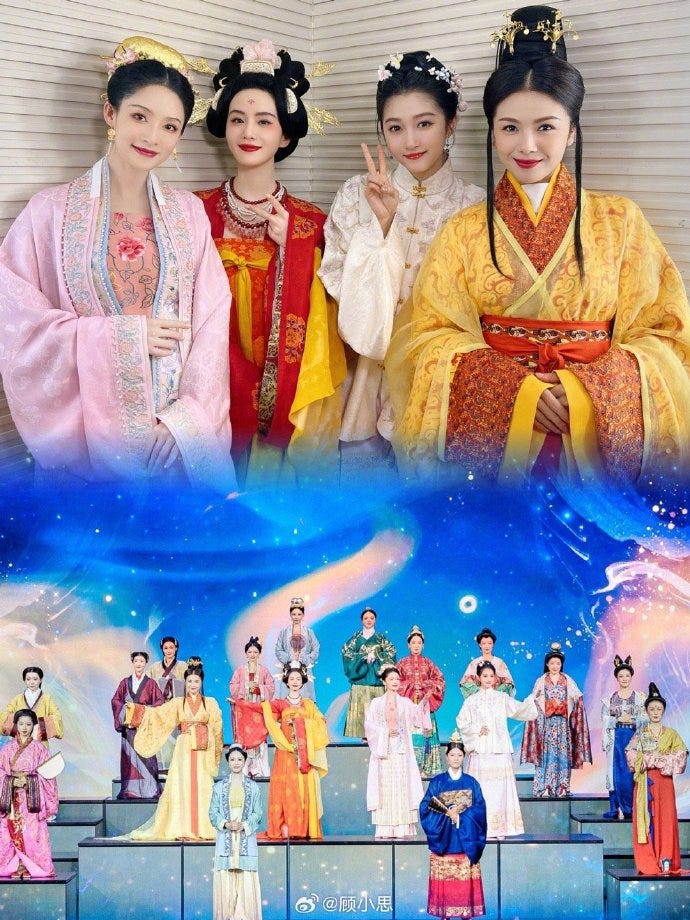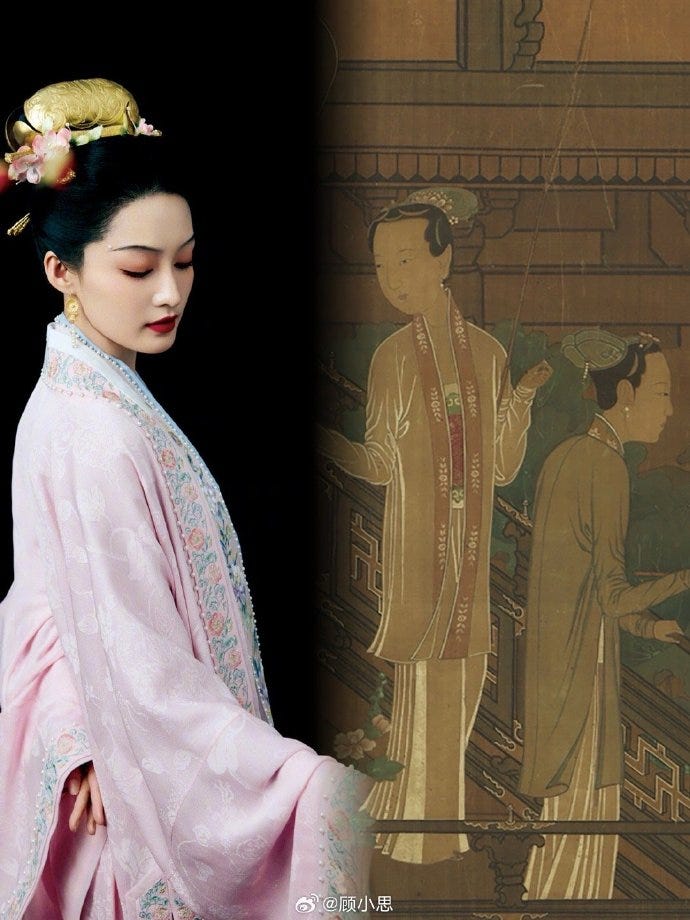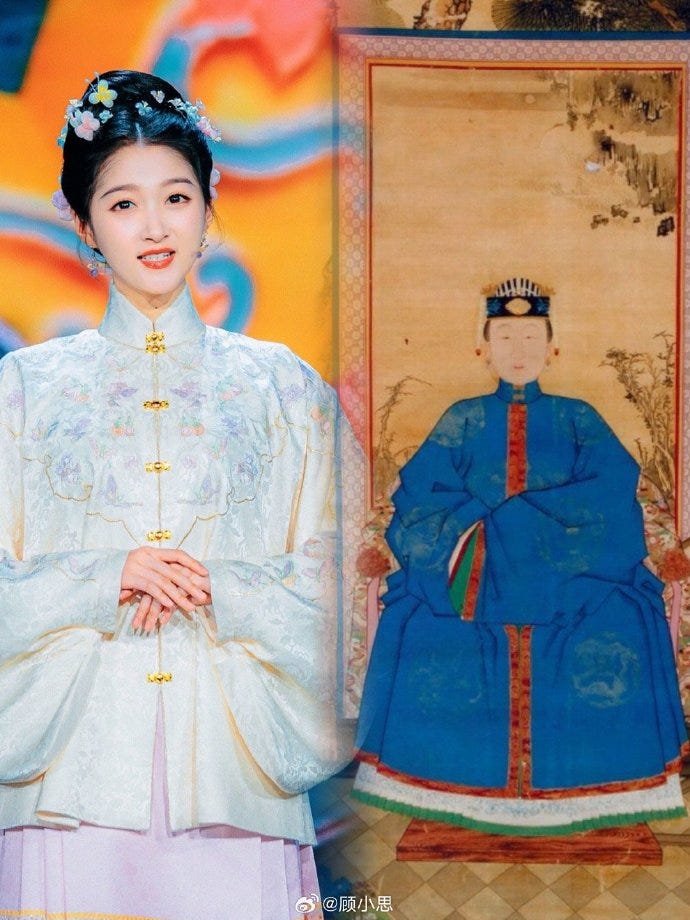#76 𝗕𝗲𝗮𝘂𝘁𝗶𝗲𝘀 𝗮𝗻𝗱 𝘁𝗵𝗲 𝘃𝗶𝘀𝘂𝗮𝗹-𝗳𝗲𝗮𝘀𝘁
Hanfu 汉服 or Han clothing offers a foreigner some insights into the Chinese culture and also the Chinese history as well.
This post is a continuation of my previous post on 2024 CCTV New Year's Gala, also known as the Spring Festival Gala 春晚, which aired on the Lunar New Year Eve. The Gala is a good introduction for a foreigner if one wants to learn about traditional Chinese culture.
One notable item this year was the presentation of Hanfu 汉服 across a few dynasties that showcased four styles of Hanfu during a song performance (see above Pic 1). What is Hanfu?
Hanfu literally means Han clothing, and it is the traditional style of clothing worn by the Han Chinese for a few thousand year. The name of the singing item is 《年锦》 and IMO it has a few meanings depending on your perspective. It could mean:
🎯 its literal meaning of the embroidered silk fabrics 锦 to be worn during the new year 年, or
🎯it could also mean 锦年 as traditionally Chinese text is read from right to left. 锦年 is a shortened version of the phrase "锦绣年华" i.e. wonderful times. So the message is the Year of the Loong is good times for all.
Someone posted on weibo on the possible source of the Hanfu and so I am doing a translation here:
◇ Refer to Pic 2 above. Similar to the Eastern Jin (东晋) Hanfu depicted in Gu Kaizhi's (顾恺之) painting "Wise and Benevolent Women" 《列女仁智图》that is shown on the right. Eastern Jin Hanfu followed the Han-style Hanfu i.e. Hanfu during the Han dynasty.
◇Refer to Pic 3 above. The Hanfu costume looks like the Dunhuang Mogao Cave painting depicting the lady benefactor (供养人) of the late Tang era. The lady benefactor was the one who sponsored the cave painting.
◇Refer to Pic 4 above. The attire is known as Song-made 宋制 Hanfu and is similar to the women in the paintings by acclaimed Song artist Zhou Wenju (周文矩) as shown.
◇Refer to Pic 5 above. It is the common Ming-made costume.
IMO, actually one might have some perceptions on the general societal values during various dynasties. For eg, the elaborate headdress worn by Tang women (Pic 3) could illustrate that women were free to beautify themselves and also they had the money to do so due to the strong economy. In contrast, Ming women seemed to dress conservatively with simple headdress, thus indicating the society had become somewhat conservative, and it might be due to the Ming Emperors' decision to become inward looking as foreign influence due to trade had become pronounced.
You can watch the 《年锦》peformance below.





